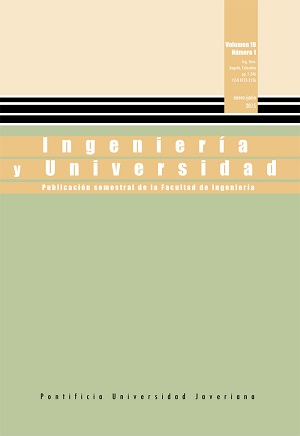Abstract
This paper describes a novel technique to control the air fraction in the intake of dual-loop exhaust gas recirculation (EGR) Diesel engines. This control strategy enables to efficiently regulate the air fraction while satisfying a desired EGR proportion (between low-pressure EGR and high-pressure EGR). Based on a modified physical model of the air fraction dynamics along the engine air-path, a linear parameter varying (LPV) linear quadratic regulator (LQR) control is designed to ensure the stability of the air fraction while minimizing a quadratic performance index. The controllability of the system, necessary for the LPV-LQR control design, is verified by defining a convex parameter set using a polytopic approach. The controller is evaluated under strong transient conditions using an engine model that has been experimentally validated as a reference.
[2] M. Alriksson and I. Denbrantt, “Low temperature combustion in a heavy duty Diesel engine using high levels of EGR”, SAE Technical Paper 2006-01-0075, 2006.
[3] T. Ryan and A. Matheaus, “Fuel requirements for HCCI engine operation”, SAE transactions-J Fuels Lubr, vol. 112, no. 1, pp. 1143-1152, 2003.
[4] A. Hribernik, “Effect of the exhaust gas recirculation on Diesel combustion”, J KONES Internal Combustion Engines, vol. 11, no. 1, pp. 223-231, 2004.
[5] M. Ammann et al., “Model-based control of the VGT and EGR in a turbocharged common-rail Diesel engine: theory and passenger car implementation”, SAE Technical Paper 2003-01-0357, 2003.
[6] J. Chauvin, G. Corde, and N. Petit, “Constrained motion planning for the airpath of a Diesel HCCI engine”, en Proceedings of the 45th IEEE Conference on Decision and Control, 2006. pp. 3589-3596.
[7] J. Chauvin et al., “Motion planning for experimental airpath control of a Diesel homogeneous charge-compression ignition engine”, Control Engineering Practice, vol. 16, 1081- 1091, 2008.
[8] J. Wang, “Hybrid robust control for engines running low temperature combustion and conventional Diesel combustion modes”, IEEE Transactions Control Syst Technol, vol. 16, no. 6, pp. 1138-1151, 2007.
[9] M. Herceg et al., “Nonlinear model predictive control of a turbocharged Diesel engine”, en Proceedings of the IEEE International Conference on Control Applications, 2006. pp. 2766-2771.
[10] O. Grondin, P. Moulin, and J. Chauvin, “Control of a turbocharged Diesel engine fitted with high pressure and low pressure exhaust gas recirculation systems”, en Proceedings of the 48th IEEE Conference on Decision and Control, Shanghai, 2009. pp. 6582-6589.
[11] F. Yan and J. Wang, “Control of a dual loop EGR air-path systems for advanced combustion Diesel engines by singular perturbation methodology”, en Proceedings of the American Control Conference, 2011. pp. 1561-1566.
[12] G. Bression et al., “Comparative study in LTC combustion between a short HPEGR loop without cooler and a variable lift a duration system”, en Proceedings of the 17th Aachen Colloquium Automobile and Engine Technology, 2008.
[13] J. Wang, “Air fraction estimation for multiple combustion mode Diesel engines with dual-loop EGR systems”, Control Engine Practice, vol. 16, no. 16, pp. 1479-1468, 2008.
[14] F. Castillo et al., “Boundary observers for linear and quasi-linear hyperbolic systems with application to flow control”, Automática, vol. 49, no. 11, pp. 3180-3188, 2013.
[15] K. Zhou, J. Doyle, and K. Glover, Robust and optimal control. Nueva Jersey: Prentice Hall, 1995.
[16] B. Anderson and J. Moore, Linear Optimal Control. Englewood Cliffs, NJ: Prentice Hall, 1971.
[17] G. Angelis, System analysis, modelling and control with polytopic linear models, Tesis doctoral, Technische Universiteit, Eindhoven, 2001.
[18] J. Bernussou, P. Peres, and J. Geromel, “A linear programming oriented procedure for quadratic stabilization of uncertain systems”, Systems Control Letters, vol. 13, no. 1, pp. 65-72, 1989.
[19] S. Boyd et al. “Linear matrix inequalities in system and control theory”, Society Industrial Applied Mathematics, pp. 7-8, 1994.
[20] C. Olalla et al., “Robust LQR control for PWM converters: An LMI approach”, IEEE Transactions Industrial Electronics, vol. 56, no. 7, pp. 2548-2558, 2009.
[21] F. Castillo et al., “Simultaneous air fraction and low pressure EGR mass flow rate estimation for Diesel engines”, en 5th IFAC Symposium on System Structure and Control, vol. 5, no. 1, pp. 731-736, 2013.
[22] E. Feron, S. Boyd, and L. Ghaoui, “Numerical methods for H2 related problems”, Proceedings American Control Conference, 1992. pp. 2921-2922.
[23] F. Castillo et al., “Dynamic boundary stabilization of linear and quasi-linear hyperbolic systems”, Proceedings of the 51st IEEE Conference on Decision and Control, 2012. pp. 2952-2957.
This journal is registered under a Creative Commons Attribution 4.0 International Public License. Thus, this work may be reproduced, distributed, and publicly shared in digital format, as long as the names of the authors and Pontificia Universidad Javeriana are acknowledged. Others are allowed to quote, adapt, transform, auto-archive, republish, and create based on this material, for any purpose (even commercial ones), provided the authorship is duly acknowledged, a link to the original work is provided, and it is specified if changes have been made. Pontificia Universidad Javeriana does not hold the rights of published works and the authors are solely responsible for the contents of their works; they keep the moral, intellectual, privacy, and publicity rights.
Approving the intervention of the work (review, copy-editing, translation, layout) and the following outreach, are granted through an use license and not through an assignment of rights. This means the journal and Pontificia Universidad Javeriana cannot be held responsible for any ethical malpractice by the authors. As a consequence of the protection granted by the use license, the journal is not required to publish recantations or modify information already published, unless the errata stems from the editorial management process. Publishing contents in this journal does not generate royalties for contributors.


